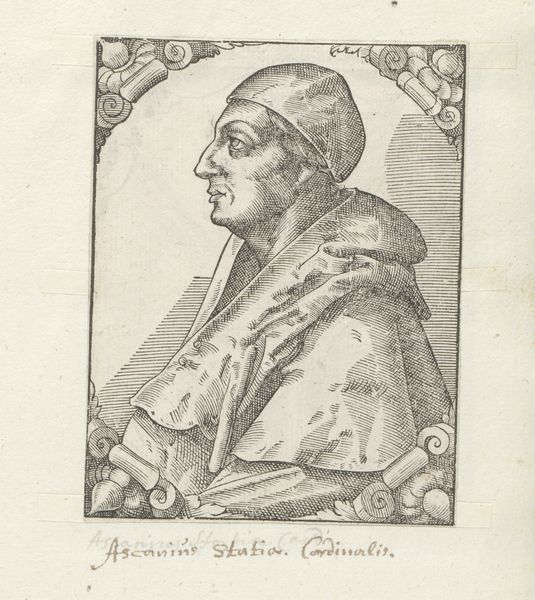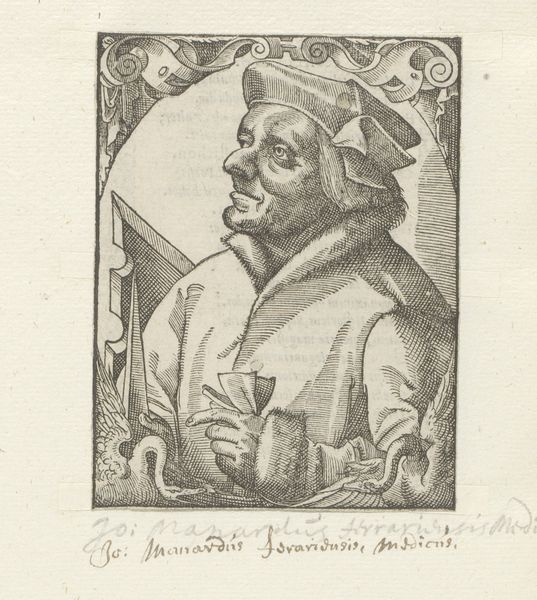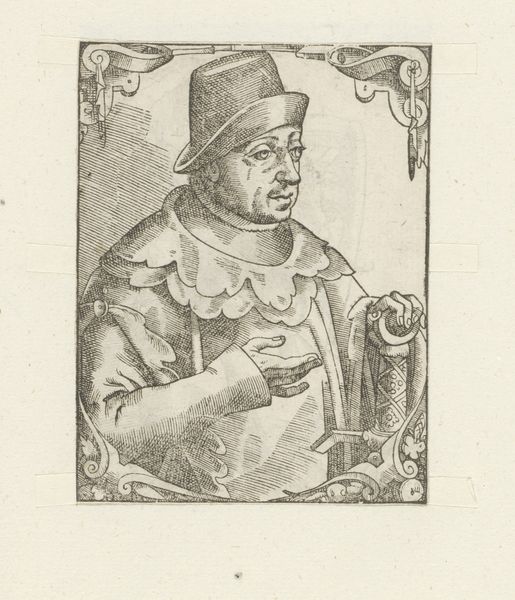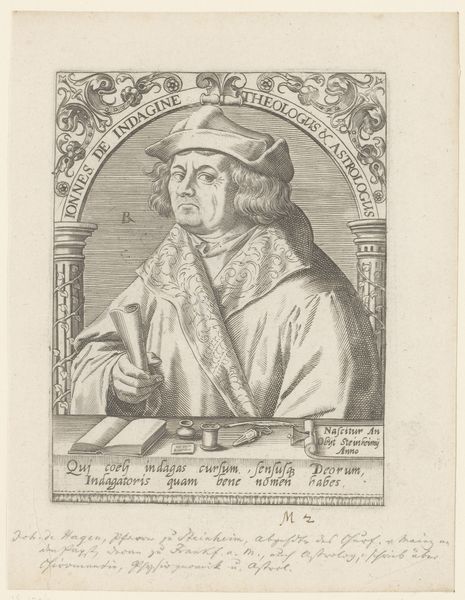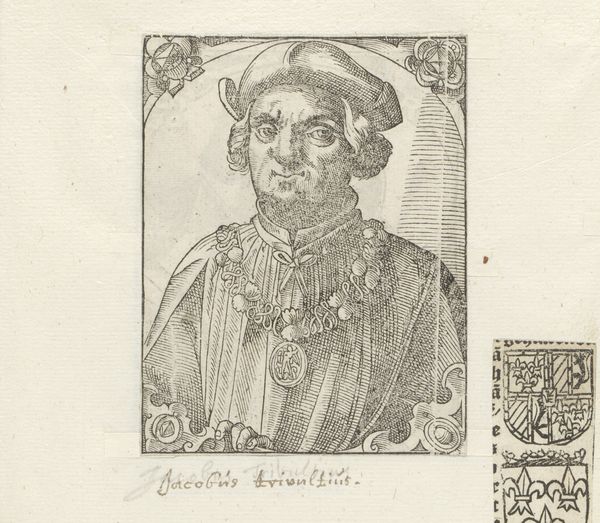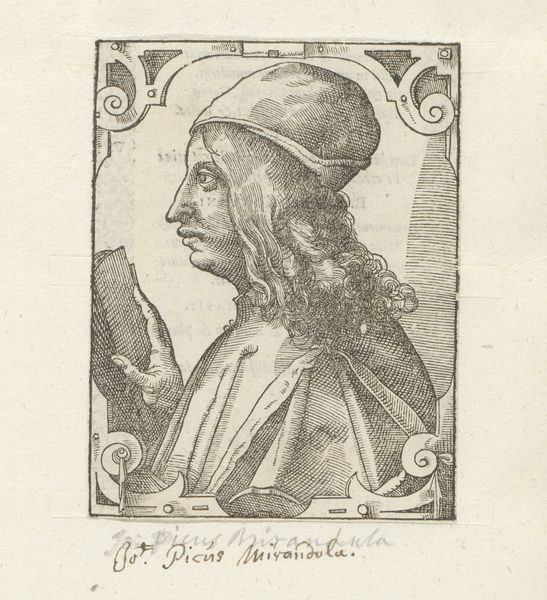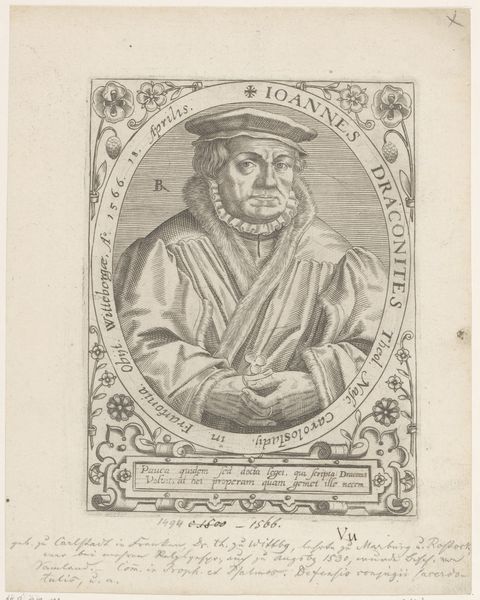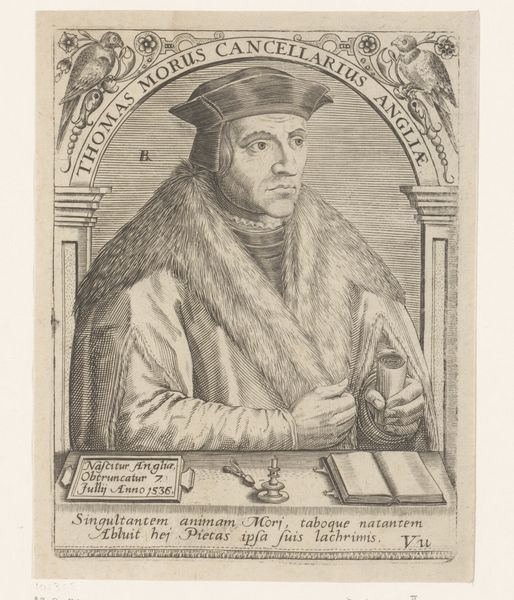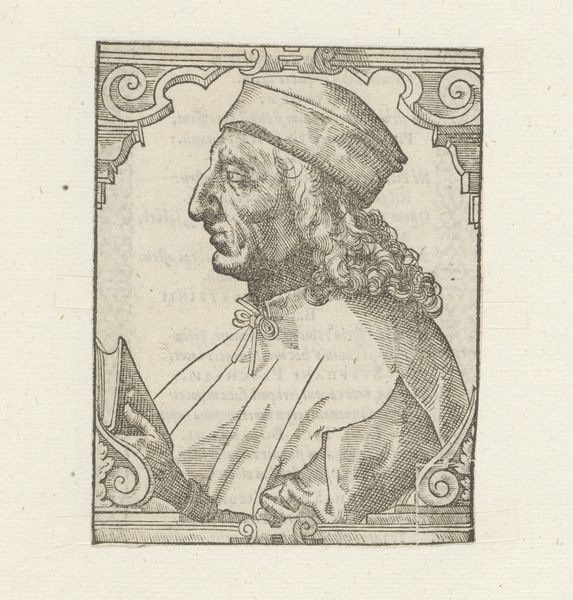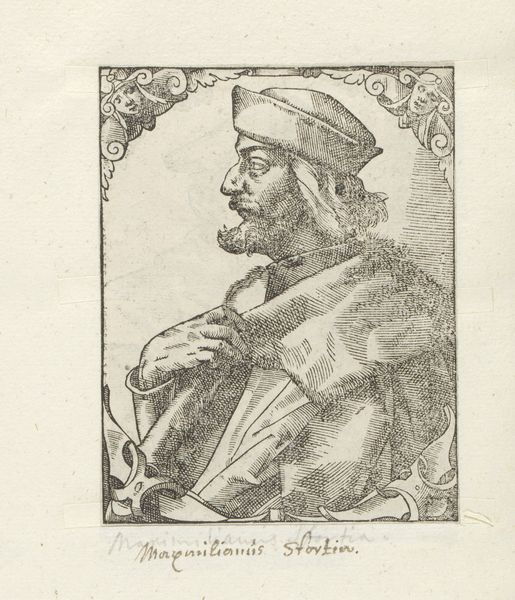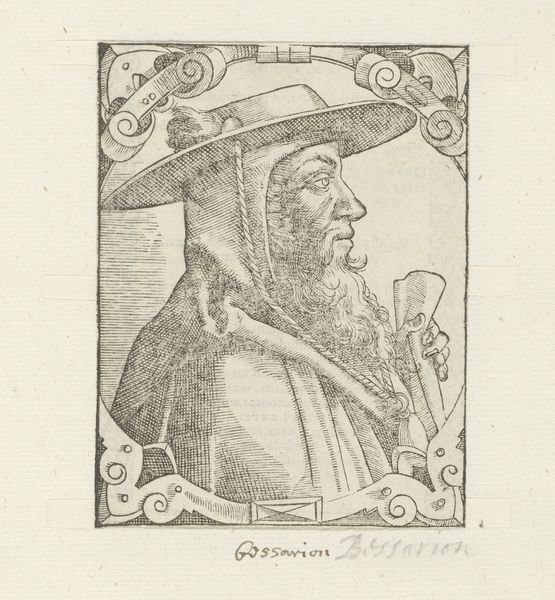
Dimensions: height 109 mm, width 87 mm
Copyright: Rijks Museum: Open Domain
Curator: Today we're looking at a piece titled "Portret van keizer Maximiliaan I van Habsburg," or "Portrait of Emperor Maximilian I of Habsburg," likely created sometime between 1549 and 1575. The artist is, as far as we know, anonymous, and the work is an engraving. Editor: The immediate impression I get is one of understated power. It's a delicate image, almost fragile in its detail, yet the sitter's gaze is remarkably direct, framed by those geometric decorative motifs. The artist really captured a strong sense of line here; it’s very compelling despite the limitations of the engraving process. Curator: That direct gaze is certainly something that the artist, or workshop of artists, cultivated. Portraits of Maximilian, especially in print, were very intentionally circulated to bolster his image. They were strategic political tools, meant to project authority. Editor: I see what you mean about authority. Note how the fur collar dominates the composition, and how his hat sits flat. Then compare it to the flower he’s holding—delicate and small—it acts to augment his power and virility. The way it is offset allows us to reflect more on the scale. Curator: Indeed. Maximilian was keen to present himself as a learned, chivalrous leader, so elements like the flower would contribute to that persona, presenting him as cultivated and refined, as much as the jewels around his neck display his riches and status. These portraits became part of a broader campaign of image-making, cementing his place in history. Editor: It's fascinating how such minute details, etched with such precision, build towards a calculated and rather grand effect. The linear elements create almost a woven tapestry of imagery, and a portrait like this gives so much weight to considering that semiotic impact. Curator: Yes, seeing it in the context of early printing and distribution changes our understanding of its purpose. These images circulated widely, influencing perceptions of Maximilian and reinforcing his imperial power. Editor: So, even in something as seemingly straightforward as a portrait engraving, there's a layered complexity that extends beyond the aesthetic. A successful image really does become so much more than the sum of its lines and forms, it becomes, for lack of a better word, an artifact. Curator: Absolutely. Studying this portrait lets us analyze Renaissance politics through the lens of visual culture. It reveals a lot about Maximilian's ambitions and the strategies employed to cultivate his public image. Editor: It certainly gives a fresh meaning to "power dressing"! Thank you. Curator: A pleasure!
Comments
No comments
Be the first to comment and join the conversation on the ultimate creative platform.
